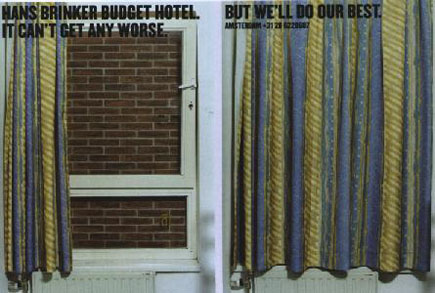‘
Viral Marketing’ is one of those trendy phrases that has been floating around the Internet for the past couple of years, but it’s definition has often been murky. Is it simply a funny video, designed to be passed around offices up and down the country, or should it be used to define only those videos selling a product? Should brand it’s promoting be displayed loud and proud, or try and sneak it in when the viewer’s not looking? Well… these are all definitely questions…
Luckily the
Viral Video Club approached us via
Twitter and directed us towards a viral marketing event they would soon be hosting at
Cargo in Shoreditch.
We arrived and, after propping up the bar for a few minutes, sank in to the over-sized beanbag chairs covering the floor and prepared to soak up all the knowledge from the line up of speakers. These included representatives from
Unruly Media,
ST16,
EBuzzing,
The Viral Factory and the king of the mash-up,
Cassetteboy himself.
It was not a seminar or master class in the art of cracking a viral marketing campaign but more of an informal discussion around the topic. The speakers were good, apart from the slightly painful awkwardness and over-sized sunglasses of
Cassetteboy – but we’ll forgive him because he makes a darn
entertaining video.
I thought it might be useful to list some of the tips they gave us and these apply for any viral video content.
DO - Use Your Contacts
Any of your contacts could be good for distribution. You never know who just might know someone else, or is the cousin of someone’s brother-in-law’s aunt, so share share share - Within your own group of friends, contact lists and colleagues.
DO - Contact Influential Tweeters and Bloggers
Often celebrities and influential members of the online community can be relied on to display your content to their many thousands of fans.
Stephen Fry,
Perez Hilton, and
Lord Alan Sugar are amongst some of the most influential
Twitter users online today and have a very high click-through rate.
Some of these celebs may be willing to do you a favour, especially if you already have a professional relationship with them, others however will definitely be hitting your wallets.
DON’T - Rely On Celebrities As Content
Just because you have a great celebrity in your contact list does not guarantee a viral hit. For example when David Arquette & Courteney Cox featured in a viral campaign against domestic violence for
The Ocean Park Community Center (OPCC), they came under a huge media and audience backlash who did not agree with the tone at all.
The moral of the story, make sure your content is targeting the right audience and tone before even considering which celebrity you should shoe-horn in.
Also take the
Old Spice adverts for an example, no celebrity endorsement was needed but it currently has over 42 million views!
DON’T - Think You Have To Be Funny
Some great video pieces have been produced that raise awareness for different subjects, such as this one for
Sussex Safer Roads. It is visually beautiful and thought provoking without needing humour.
At the end of the day it’s about getting a reaction from the viewer., do you want them to interact, laugh, cry, be amazed – probably you want them to buy something too. Granted, humorous videos are often the post popular and highly shareable but videos featuring public stunts and great cinematography can do just as well. And it goes without saying that viewers love a good
shock proposal or
surprise wedding too…
DO - Provide Value For Your Viewers
People often share videos because it represents a viewpoint of character trait that they want others to know they have.
So if a viewer shares a funny video, they want their friends to know that this is their type of humour. If it’s a
Cassetteboy mashup of David Cameron, then it is likely that they dislike his style of leadership. Often the most shared videos are large scale stunts, such as the
Sony Bravia (Bouncy Balls) advert or public flash-mob style events, like
Push For Drama.
The sense of disbelief you feel when watching them, the ‘omg-I-can’t-believe-they-did-this!’, makes you want to pass it around so others can also witness the epic feat and validate how they did it or whether, indeed, it is real.
DON’T - Limit Yourself On Time
Commonly it’s thought that virals should be short and sweet, although it’s maybe good to think under 2 minutes, if you have a great idea that needs more time then hopefully the content should still keep viewers engaged.
Take for example one of the
top viral ads of all time,
DC Shoes: Gymkhana, which runs to 7 minutes 42 seconds, just enough time to make a cup of tea.
I realise there will always be exceptions that break these rules, but it's about trying different techniques and different types of content until you find a formula that works for you. And don't be afraid to fail - if you don't try, you can't succeed.
Keep watching
this space as we continue to delve further in to the muddy waters of viral marketing!
 For anyone that has seen Banksy’s Oscar
nominated documentary 'Exit Through the Gift Shop', the figure of ‘Mr Brainwash’ (real name Thierry Guetta) will be a familiar one.
For anyone that has seen Banksy’s Oscar
nominated documentary 'Exit Through the Gift Shop', the figure of ‘Mr Brainwash’ (real name Thierry Guetta) will be a familiar one. 















